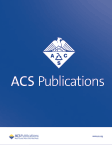摘要 PO5-07-06:患者特异性因素对定量乳腺实质纹理特征的影响
IF 3.4
Q2 PUBLIC, ENVIRONMENTAL & OCCUPATIONAL HEALTH
引用次数: 0
摘要
乳腺实质纹理描述了乳腺组织的空间和结构模式,是乳腺癌风险的独立预测指标。虽然乳腺实质纹理在概念上与另一种乳腺成分测量指标--乳腺密度有相似之处,但乳腺实质纹理更为复杂,并由多种定量测量指标表示。关于乳腺实质纹理和乳腺密度在流行病学和生物学基础上的差异程度还没有很好的描述。在这项横断面研究中,我们评估了 308 名年龄≥ 45 岁的绝经后女性对乳腺实质纹理的定量测量,这些女性在 2020 年至 2022 年期间参加了一家学术医疗中心的常规乳腺癌筛查。在获得知情同意后,参与者填写了一份简短的访谈式问卷。其他人口统计学和乳腺癌风险因素信息来自病历。根据全视野数字乳房X光片的头尾切面测量乳腺实质纹理特征。测量的纹理值经过标准化处理,并在左右乳房之间取平均值。在这项分析中,我们评估了之前被证实与乳腺癌风险相关的特征(分形维度、灰度级平均值、共现熵和逆差矩)与筛查时报告的患者个人和临床特征之间的关联。纹理特征与参与者特征之间的关联采用皮尔逊相关性(连续变量)或 Kruskal-Wallis 检验(分类变量)进行评估。广义线性模型用于调整与图像采集相关的技术因素,包括乳腺 X 射线摄影机、压缩力和软件版本。P值小于0.05被认为具有统计学意义。在 308 名参与者中,70% 为白人,24% 为黑人,1% 为亚裔,1% 为美洲印第安人,4% 为其他未说明的种族。4%的参与者报告自己是西班牙裔。平均年龄为 64.7 岁(45 - 84 岁不等)。只有不到一半的女性被放射科医生报告为乳房致密(异质性致密--24%,极致密--5%,几乎完全脂肪性--21%,散在纤维腺致密--50%)。平均体重指数(BMI)为 29.4 kg/m2(范围从 19.4 kg/m2 到 53.1 kg/m2),77% 的女性为双侧乳房。体重指数与分形维度(r=0.62,P< 0.01)和灰度级平均值(r=-0.48,P< 0.01)密切相关,与共现熵的相关性较弱(r=-0.19,P< 0.01)。年龄与共现逆差矩的相关性较弱(r=-0.12,P=0.03)。BI-RADS乳腺密度与分形维度、灰度级平均值和共现熵成反比(均P< 0.01)。对技术因素的调整削弱了某些相关性,但体重指数与分形维度(P< 0.01)和灰度级平均值(P< 0.01)的相关性,以及乳腺密度与分形维度、灰度级平均值和共现熵(均P< 0.01)的相关性均具有统计学意义。在未调整或调整分析中,胎次与所评估的任何特征均无关联(P 均大于 0.05)。这些数据表明,在绝经后妇女中,与风险相关的实质纹理特征与受体型和脂肪影响的指标相关,而与年龄或生育状况相关的指标无关。要了解这些关联的时间性,需要进行纵向研究。此外,未来的研究还将探讨纹理特征的联合效应以及内源性雌激素水平对纹理特征的影响,这将有助于深入了解影响纹理特征与个人特征和乳腺癌风险相关性的生物学机制。引用格式:Sarah Nyante, Yukie Kajita, Walter Mankowski, Ley Killeya, Despina Kontos, Xianming Tan, Eric Cohen, Cherie Kuzmiak.患者特异性因素对定量乳腺实质纹理特征的影响[摘要]。In:2023 年圣安东尼奥乳腺癌研讨会论文集;2023 年 12 月 5-9 日;德克萨斯州圣安东尼奥。费城(宾夕法尼亚州):AACR; Cancer Res 2024;84(9 Suppl):Abstract nr PO5-07-06.本文章由计算机程序翻译,如有差异,请以英文原文为准。
Abstract PO5-07-06: Impact of patient-specific factors on quantitative breast parenchymal texture features
Breast parenchymal texture characterizes the spatial and structural patterns of breast tissue and is an independent predictor of breast cancer risk. Although it has conceptual similarities with another breast composition measure, breast density, parenchymal texture is more complex and is represented by multiple quantitative measures. The extent to which the epidemiology and biological basis of parenchymal texture and breast density differ has not been well described.
In this cross-sectional study, we evaluated quantitative measures of parenchymal texture among 308 postmenopausal women aged ≥ 45 years who participated in a routine breast cancer screening at an academic medical center between 2020 and 2022. After providing informed consent, participants completed a short interview-based questionnaire. Additional demographic and breast cancer risk factor information was obtained from the medical record. Parenchymal texture features were measured from craniocaudal views of full-field digital mammograms. Measured texture values were standardized and averaged across left and right breasts. For this analysis, we evaluated associations between features previously validated as being associated with breast cancer risk (fractal dimension, grey-level mean, co-occurrence entropy and inverse difference moment) and patient personal and clinical characteristics reported at the time of screening. Associations between texture features and participant characteristics were evaluated using Pearson correlations (continuous variables) or the Kruskal-Wallis test (categorical variables). Generalized linear models were used to adjust for technical factors associated with image acquisition, including mammography machine, compression force, and software version. P-values less than 0.05 were considered statistically significant.
Among the 308 participants, 70% were White, 24% were Black, 1% were Asian, 1% were American Indian, and 4% were another race that was not specified. 4% of participants reported Hispanic ethnicity. The mean age was 64.7 years (range 45 – 84 years). Fewer than half of the women were reported by a radiologist to have dense breasts (heterogeneously dense – 24%, extremely dense – 5%, vs. almost entirely fatty – 21%, scattered fibroglandular densities – 50%). The mean body mass index (BMI) was 29.4 kg/m2 (range 19.4 to 53.1 kg/m2) and 77% of the women were parous.
BMI was strongly correlated with fractal dimension (r=0.62, P< 0.01) and grey-level mean (r=-0.48, P< 0.01), and had a weaker correlation with co-occurrence entropy (r=-0.19, P< 0.01). Age was weakly correlated with co-occurrence inverse difference moment (r=-0.12, P=0.03). BI-RADS breast density was inversely associated with fractal dimension, grey-level mean, and co-occurrence entropy (all P< 0.01). Adjustment for technical factors attenuated some associations, but BMI associations with fractal dimension (P< 0.01) and gray-level mean (P< 0.01), and breast density associations with fractal dimension, grey-level mean, and co-occurrence entropy (all P< 0.01) all remained statistically significant. Parity was not associated with any of the features evaluated in unadjusted or adjusted analyses (all P >0.05).
These data suggest that, in postmenopausal women, risk-associated parenchymal texture features are associated with measures affected by body size and adiposity, but not with measures related to age or reproductive status. Longitudinal studies are needed to understand the temporality of these associations. Additionally, future studies will address the joint effects of texture features and the impact of endogenous estrogen levels on the features, which will provide insight into the biological mechanisms that influence texture feature associations with personal characteristics and breast cancer risk.
Citation Format: Sarah Nyante, Yukie Kajita, Walter Mankowski, Ley Killeya, Despina Kontos, Xianming Tan, Eric Cohen, Cherie Kuzmiak. Impact of patient-specific factors on quantitative breast parenchymal texture features [abstract]. In: Proceedings of the 2023 San Antonio Breast Cancer Symposium; 2023 Dec 5-9; San Antonio, TX. Philadelphia (PA): AACR; Cancer Res 2024;84(9 Suppl):Abstract nr PO5-07-06.
求助全文
通过发布文献求助,成功后即可免费获取论文全文。
去求助
来源期刊

ACS Chemical Health & Safety
PUBLIC, ENVIRONMENTAL & OCCUPATIONAL HEALTH-
CiteScore
3.10
自引率
20.00%
发文量
63
期刊介绍:
The Journal of Chemical Health and Safety focuses on news, information, and ideas relating to issues and advances in chemical health and safety. The Journal of Chemical Health and Safety covers up-to-the minute, in-depth views of safety issues ranging from OSHA and EPA regulations to the safe handling of hazardous waste, from the latest innovations in effective chemical hygiene practices to the courts'' most recent rulings on safety-related lawsuits. The Journal of Chemical Health and Safety presents real-world information that health, safety and environmental professionals and others responsible for the safety of their workplaces can put to use right away, identifying potential and developing safety concerns before they do real harm.
 求助内容:
求助内容: 应助结果提醒方式:
应助结果提醒方式:


